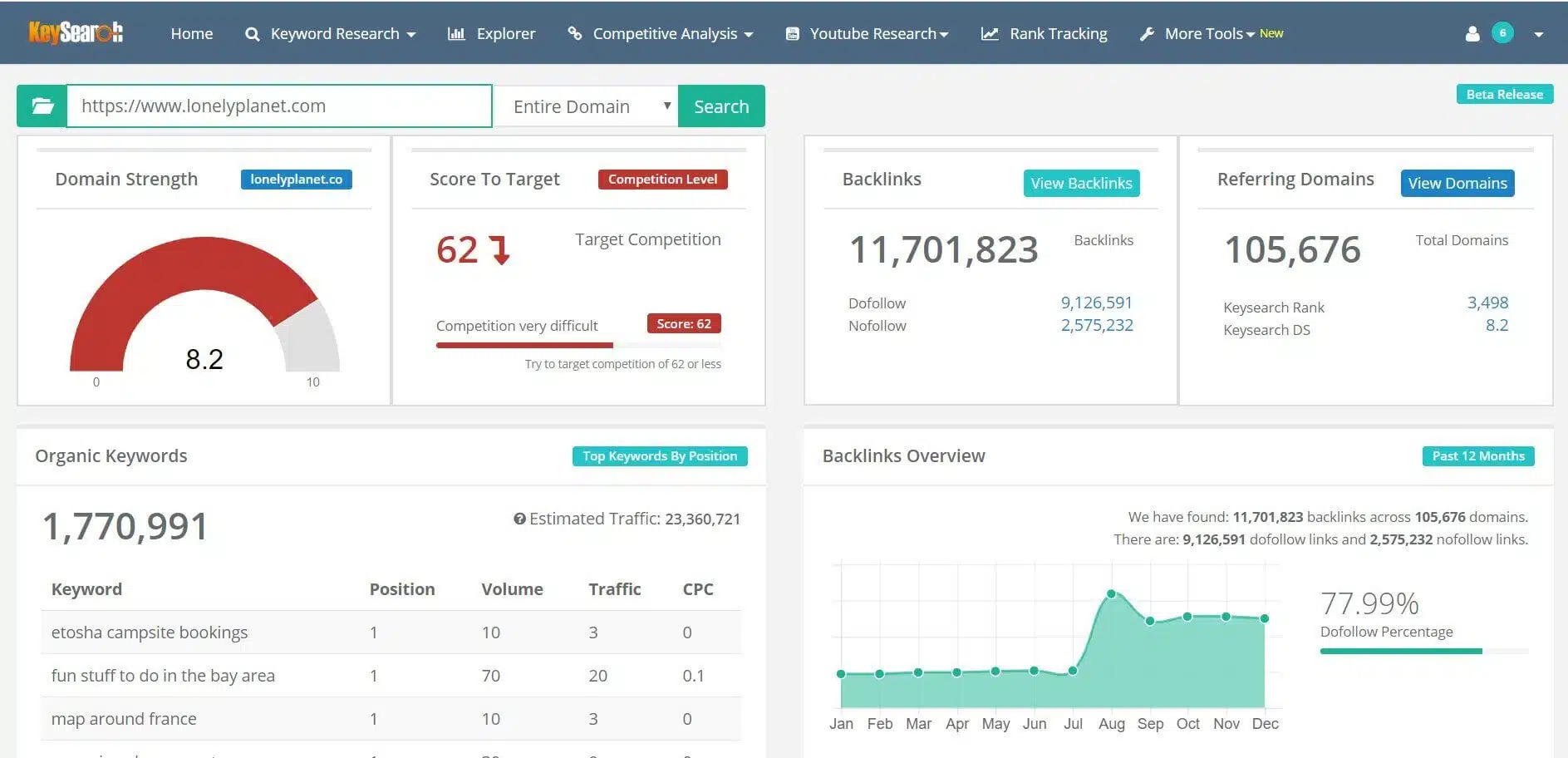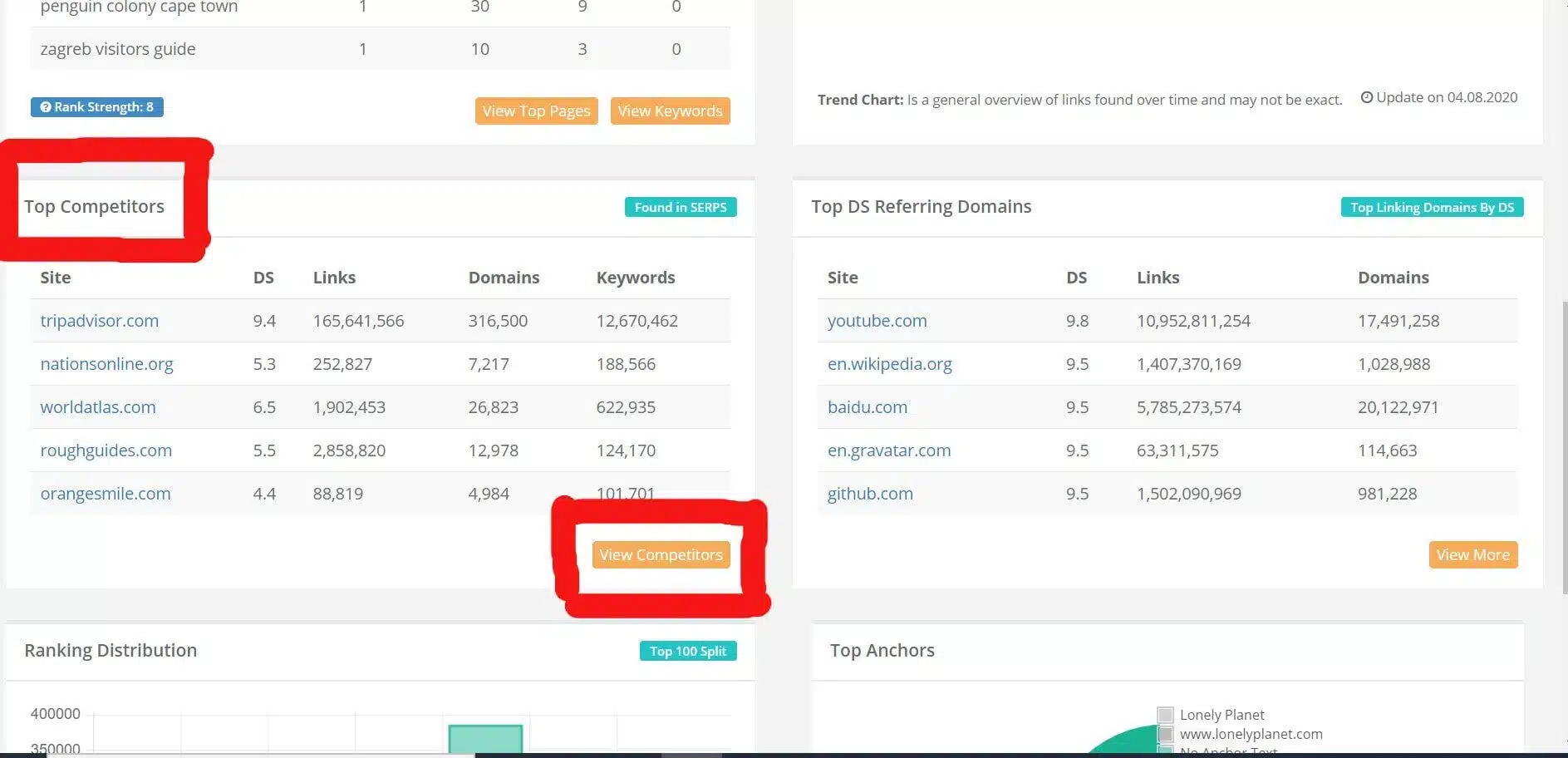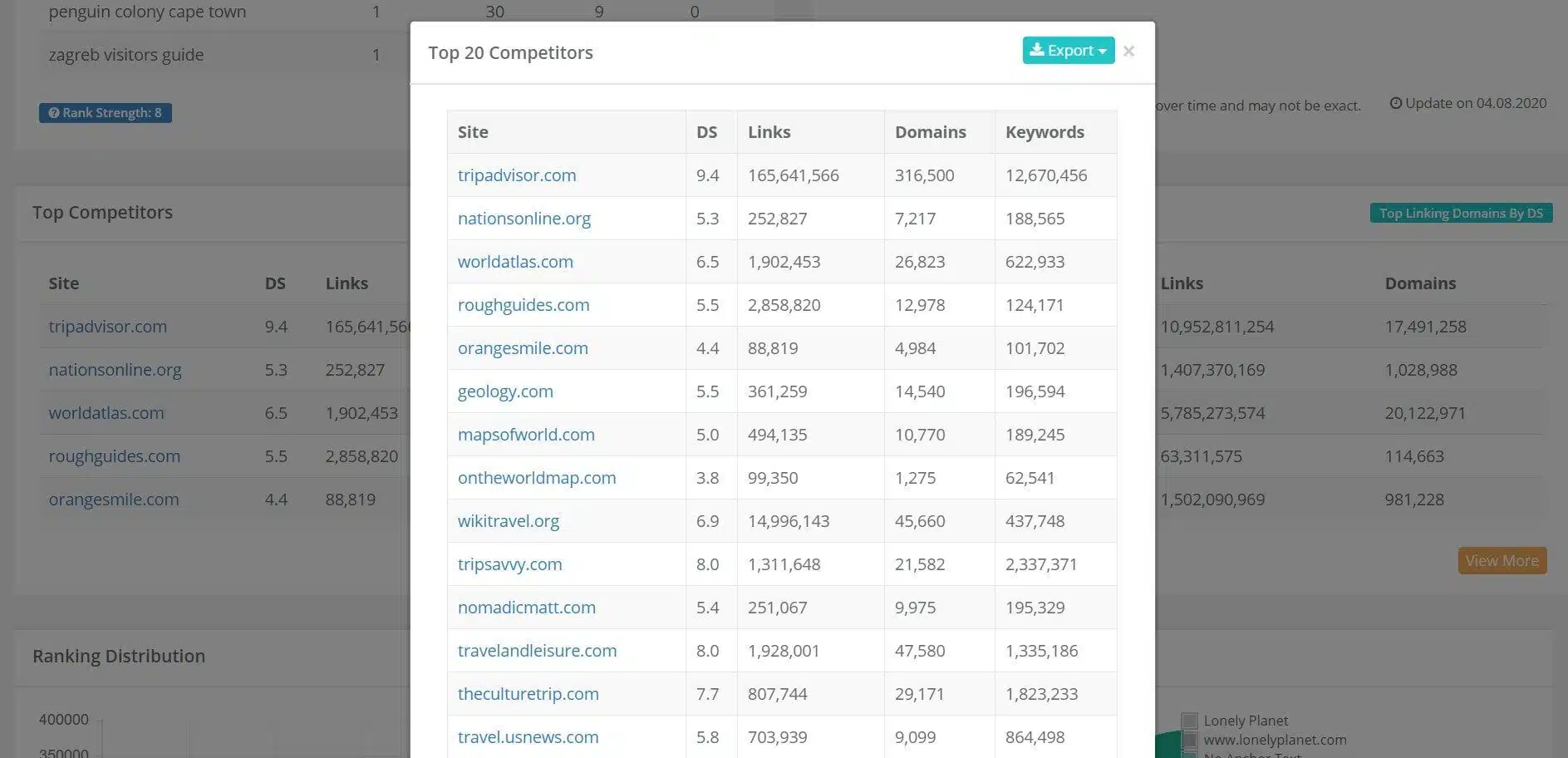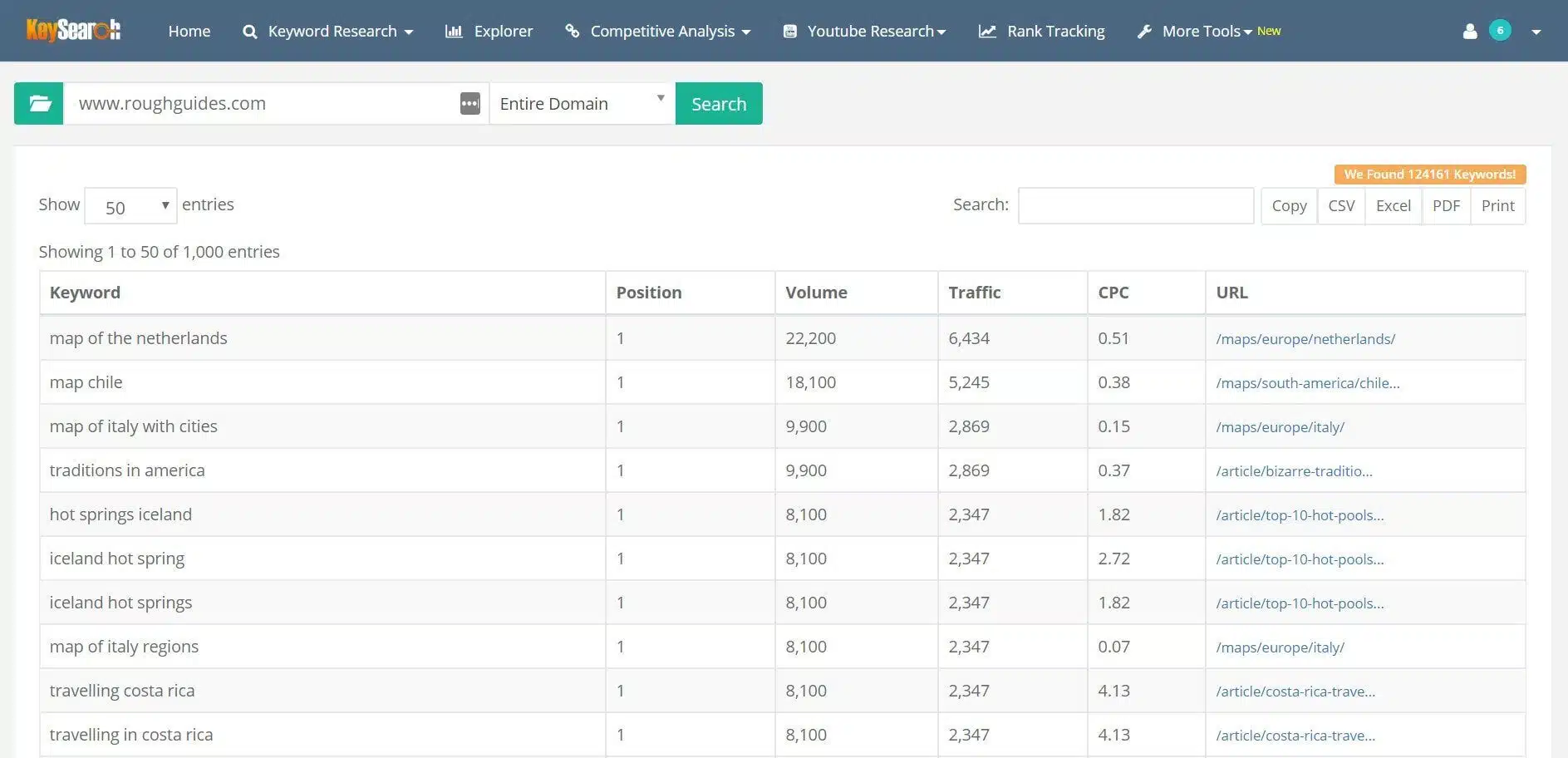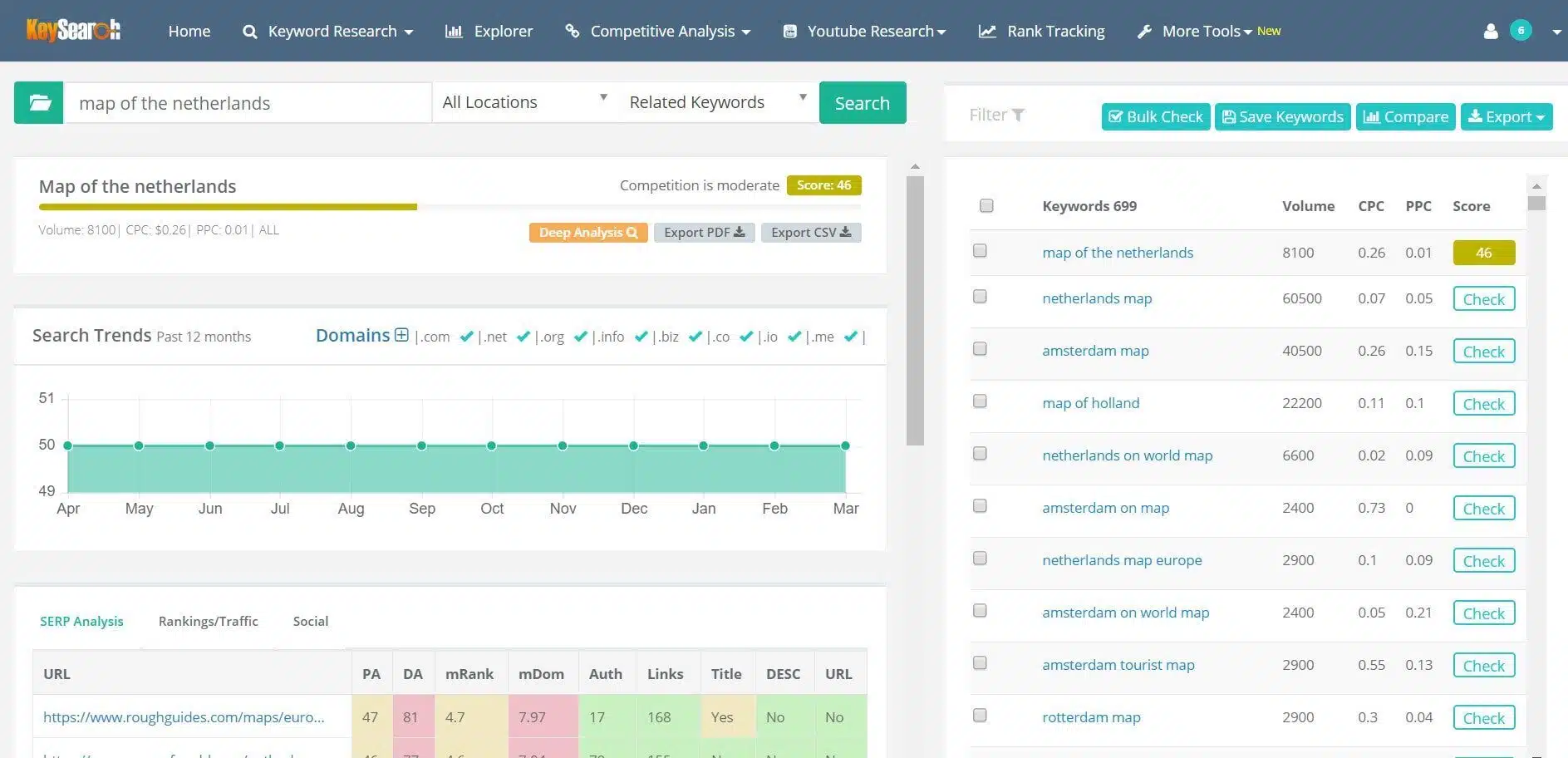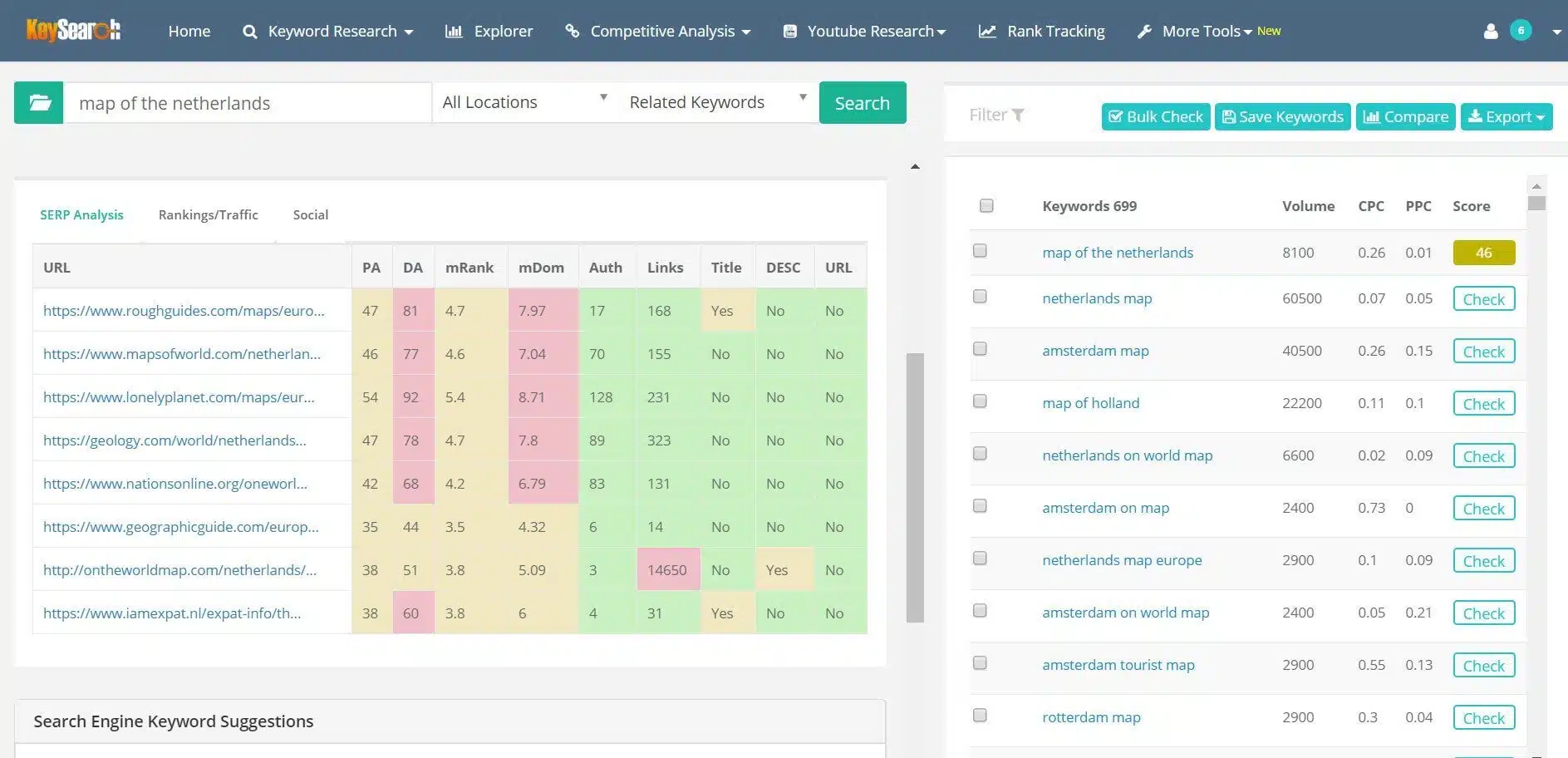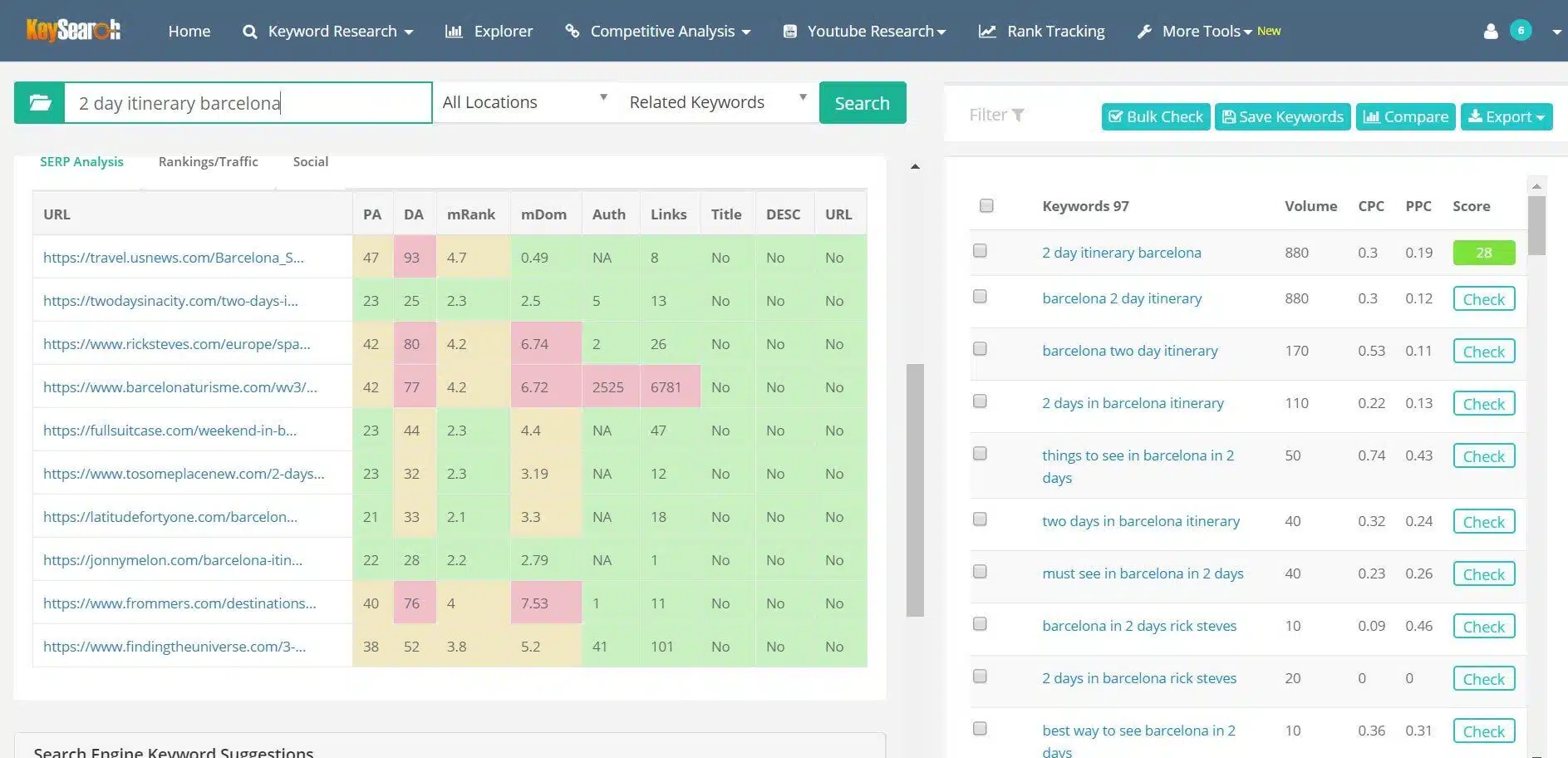I hope this post helps you find unlimited travel topics to write about!
Travel blogging isn’t short of challenges!
The competitive niche. The technical issues. The endless workload. The patience and commitment required to see results…The list goes on and on.
Now, everybody’s blogging journey is different, so the exact issues can vary from person to person.
But I think there’s one particular problem that stumps almost every travel blogger from time to time:
Finding travel topics to write about!
I know, it seems so basic- how can a blogger run out of stuff to blog about?!
Spend enough time blogging, though, and you realize that constantly coming up with new topics isn’t so simple. I, for one, used to struggle with it a lot.
Until (through pure fluke) I stumbled across an epic solution to the problem. Now I’ve got more travel topics to post about than I have time to write.
I thought I’d share the ‘secret’!
Ready to never run out of travel topics to write about ever again, like ever ever?
Keep reading for my top tip on generating an endless supply of travel blog posts!
FYI- this post contains affiliate links.
The Problem of Finding Travel Topics to Write About
First, though, the problem of finding travel blog topics itself is worth talking more about.
I mean, it does sound crazy!
There are endless travel topics to write about (here’s a long list of travel blog post ideas I put together to help new bloggers, if you’re interested):
Itineraries for different cities/countries/continents, general travel tips, safety suggestions, budgeting advice, road trip ideas, travel hacks…you name it.
But that’s not the issue.
The real issue is finding ideas that are interesting, useful, and stand a chance of ranking in Google!
It’d be different if you could just write any old article and see results.
That’d be sweet (my life, for one, would be far easier). But it veerrry rarely works like that.
Instead, you have to write posts that’ll actually rank in search engines. Fail, and you limit your ability to generate traffic to the article.
In other words, there’s very little return on your investment of time and energy.
Success relies on finding high-quality keywords around the topic in question (this post can help if you need an intro to keywords and keyword research) before you start writing about it.
And, more often than not, the post you have in mind has been written a thousand times before.
Ranking in Google among strong competition (especially with a new blog) is almost impossible.
In other words, the keywords are no good; the post is off the cards and you’re back to square one- with no idea what to write about.
But there’s good news: I have a solution to help…
Heads up, you might also like this post about adjectives starting with N!
Here’s the solution I’ve found for finding a steady supply of quality travel blog topics to write about…
My Solution to the Problem of Finding Travel Topics
Once again, the magic combination you’re looking for is this:
Awesome travel topic ideas with epic keywords (aka high-volume, low competition) for which you can rank.
Without the keywords, I’d never write the post (unless I just wanted a fun writing experience with no expectation of traffic, or I had a tonne of followers on social media to whom I could market it).
To achieve that magic combination I use a certain feature on a keyword research tool called Keysearch.
I love and recommend Keysearch to anyone (here’s a full review to read more about the tool).
And I’m afraid the following hack is somewhat reliant on having it (or, perhaps, another keyword research tool with similar functionality).
And, by ‘somewhat’, I mean ‘totally’.
Yep, you’re going to need Keysearch if you want to enjoy this method for attaining endless travel topic ideas to write about.
But the good news is that the tool’s well worth investing in anyway.
Without it, there’s no way I would’ve had the modicum of blog success that I’ve had so far.
Keysearch is a cheap (compared to other tools for this purpose) and effective way to find the right keywords to use in your blog content.
You can get Keysearch here. And, in even better news, you can get it at 20% off by using the code ‘KSDISC’ at checkout.
Once you have Keysearch, you can use the same method I used the other day to find dozens of epic keywords/topic ideas in under an hour!
Here’s how I did it…
Blogging about travel topics? Check this out…
How to Find Travel Topics to Talk About on Your Blog
There are actually two approaches I’ve used for finding ideas when blogging about travel.
Both will come in handy to travel bloggers with a bit of experience under their belt. But, for anyone totally new to blogging, the second method will probably be more helpful.
Here they both are:
Method Number 1
Method 1 has two parts. Here they both are:
PART A- Find the Competition
This is the Explorer page on Keysearch. I’ve used Lonely Planet throughout this example, but you’d have typed your own website into this page of Keysearch!
Start by going to the Explorer feature of Keysearch (at the top) and typing in your website’s domain name.
Hit search (making sure you’ve got ‘entire domain’ selected).
The next screen will deliver a host of useful information about your own website.
Ignore it all until you find the ‘top competitors’ section. You’ll see it on the left-hand side as you scroll down. Found it?
Click ‘view competitors’.
Scroll down the ‘Top Competitors’ section of the table and click ‘View Competitors’.
This will show you 20 websites that are currently competing with you for rankings on Google!
In other words, your website posts similar content to theirs and you’ve got articles at similar levels in search results.
The table in front of you shows each site’s:
- Domain score (DS),
- Number of links (i.e. the number of backlinks they’ve got point at their site),
- Number of domains (i.e. the number of domains linking to their website), and
- Keywords (i.e. the number of keywords for which they’re ranking).
TOP TIP:
FYI, don’t mistake DS for DA (aka domain authority).
DS is a score given to you by Keysearch that’s determined by the data it’s found about your site. You can see it at the top left of the explorer page.
It’s telling you the difficulty score (another Keysearch metric that you can read about on my Keysearch review) of keywords that your website should target in order to rank for them in Google.
DA is somewhat similar but it’s determined by Moz, in line with the metrics it uses to ascertain one website’s authority relative to others (the result of which can indicate how easy it’ll be for them to rank- higher DAs make it easier to rank content).
The screen you’ll see what you’ve hit the ‘View Competitors’ button. It’s all key info when searching for travel topics to write about.
Aaaanyway, back to the method, look for a competitor website with a similar DS to yours that’s ranking for as many keywords as possible.
From there, it’s onto step 2 of method 1.
It’s time to take inspiration from (*cough* steal) their keywords!
Ready to invest in Keysearch? Click here to get your hands on it.
PART B- Steal from the Competition
This is the Organic Keywords screen in the Competitor Analysis drop down menu. I’ve taken a competitor of interest from the previous screen and searched it here to show the keywords for which it’s ranking.
In part A, you found a website that’s similar to yours in terms of authority and rankings.
Just as importantly, though, you found one that’s ranking for heaps of keywords.
This next step is where it gets really interesting.
I recommend duplicating the current Keysearch tab (with the competitor) results on your browser. On the new tab, navigate over to the ‘organic keywords’ feature on the ‘competitor analysis’ section at the top.
Once there, insert the domain name/URL of your chosen competitor (as shown above), set it to ‘entire domain’, and hit search.
Boom, you can now see every single keyword that Keysearch says they’re ranking for on Google.
This is a treasure trove of information.
You can see their current position in Google for each specific keyword, as well as the amount of traffic their site is getting for it.
You’ll see the overall monthly search volume of the keywords and CPC (cost per click) too.
Don’t worry about the CPC as much (it’s related to advertising). But the volume score reveals how many searches that keyword is getting each month.
In other words, that’s how popular the search term is online.
And, what do you know, a competitor with a similar website authority to yours is ranking for it!
The result? You could be able to rank for it too!
Click on the ‘traffic’ heading at the top of the table to see which keyword is bringing your competitor most traffic.
You’re now seeing a long list of keywords that could bring your website as much (if not more) traffic as it is to your competitor.
Right there, in that table, is the answer to your problem of what travel topics to write about.
Each keyword could form the basis of another blog post.
There might be dozens of high-volume keywords (though, granted, many will be showing for the same high-ranking blog posts on their site) that you can use as inspiration for your own future articles.
However, there’s one final step before you decide which keyword(s) to turn and run/write with.
PART C- Verify Your Results
It’s time to verify your results! Take one of the top keywords from the competitor that you’re interested in writing about (in this case, ‘map of the netherlands’).
The final step of method 1 is to verify the keywords you’re most interested in ‘stealing’.
Part B might have revealed a bunch of high-traffic keywords you’d be keen to write about in new blog posts.
But, first, you need to make sure you stand a chance of ranking for them.
Just because Keysearch says your domain scores are similar doesn’t mean it’s a given.
All sorts of ranking factors come into play, which means there’s a ton of reasons your competitor might be ranking well for that term. For instance, they could have received a mass of backlinks to the article in question, or just simply got lucky.
In any case, you want to make sure the keyword’s worth your time.
Take each one of interest and run them through the ‘Keyword Research’ section of Keysearch.
Scroll down to view the table on the left hand side to check the competition for the keyword. See the red and amber? That means it’d be hard to rank for. But, and it’s a big but, I started with Lonely Planet as my example website, which is a serious website with an authority high enough to compete.
The table on the left is where you’ll find your answers.
Do you see a sea of green in front of you? Or is it awash with red and amber (as in the example above)? These colors indicate the difficulty scores of each domain that’s ranking for that keyword.
FYI, somewhere on the table, you’ll see your chosen competitor’s page amongst them.
Green is good; red and amber are not!
Roughly speaking, the more green URLs on that table, the easier you’ll find it to rank alongside/above them on Google.
To be more specific, the more URLs with a DA (DA, this time- not DS) that’s lower than yours, the easier you’ll find it to rank alongside/above them on Google.
To be even more precise, if you’ve got a DA that’s equal or higher than 3 or more of those URLs, then you stand a great chance of ranking for that keyword.
TOP TIP:
FYI, this is how I judge (using Keysearch) which keywords I’ll use in my articles.
If I’m honest, the difficulty scores of keywords you search for can be a bit misleading.
A light-green is said to be relatively easy in terms of competition, based on Keysearch’s calculations. However, I’ve found it incredibly hard to rank for these keywords in the past.
It’s only the keywords with low difficulty scores AND for which my DA beats 3 or more of the current ranking domains that I know I can rank well for on Google.
So now those are the only ones I pursue in my blog posts!
Is your blog brand new with a DA that’s still pretty low (let’s say, under 20)?
Well, there’s a good chance you won’t find many (or any) keywords for which your DA is higher than 3 of the current ranking domains.
If that’s the case, then don’t despair.
For one thing, it doesn’t mean you can’t outrank them!
With a well-written, SEO optimized, in-depth post, there’s still a chance you can beat them- especially if you get some backlinks going to the post (preferably more than they do- see the ‘Auth’ score on the table to find that number).
For another, SEO takes time to work anyway.
You could write the article around the keyword now, and, in 4-6 months’ time (when SEO generally kicks in) your DA could be in a better spot.
All the same, outranking the competition with a low DA is definitely harder.
Try building up your DA score (by getting lots of backlinks from guest posts, for example) to improve your chances.
Once again, I can’t recommend Keysearch enough to deliver these kinds of data/results. Give it a shot today.
Heads up, I first came across these tips courtesy of Sharon Gourlay, from Digital Nomad Wannabe, and they’ve done me amazingly well ever since. I can thoroughly recommend her content for all of your blog growth endeavors!
She runs a highly-reputed blogging course too, which you can check out by clicking here. Not ready for a course? Check out Sharon’s epic 7-day SEO boost challenge instead, which is totally FREE.
The awesome tips in there will get your traffic up in no time. Don’t miss out! Click here to sign up.
With all that said, let’s get back to it.
Right, so you’ve done a search of the chosen keyword (that you stole from the competitor).
Now it’s up to you to decide, based on the keyword research results, whether or not it’s worth writing about. In other words, do you stand a chance of ranking for it as well?
FYI, see the picture above for the keyword ‘map of the Netherlands’? There’s masses of red and amber in that table. That means most bloggers would have no chance of ranking for that search term. However, Lonely Planet- the site I used to demonstrate this process in the images- has a DA that’s high enough that is could compete!
All the same, in a sea of red and amber, the answer is probably ‘no’. In which case, go back to the long list of keywords you found from the competitor and try another one.
If a sea of light green, though, and lots of low DA scores, then it’s a resounding ‘yes’.
That’s the primary keyword to use in your next travel blog post.
Write an article that’s better than the others already on Google, get some backlinks to it, and you’ll be ranking above them in no time.
But what if you exhaust every keyword from the first competitor and none are any good?
Well, pick another competitor from the original list and try with their keywords instead.
Do this enough and, eventually, you’ll have some success!
Method Number 2
In method 2, you begin with a keyword search. I’ve used ‘2 day itinerary barcelona’ (which turned out to be a pretty good one!) to demonstrate.
My second method involves conducting standard keyword research (on Keysearch) until you find a high-ranking website with a similar DA to yours.
This would be a better approach if you’re totally new to blogging.
Why? Because the first method relies on Keysearch having some data to find on you already.
But if you’ve not been blogging for long, then you’re unlikely to have many articles ranking very high up, which means you’ll not have the competitor information to refer to in Explorer.
This second method means you can still find top keywords to target (and articles to write about) without having that data to draw upon!
Sound good?
Here’s what you do:
Begin by navigating to the keyword research section.
Let’s say you search ‘2 day itinerary Barcelona’ as a potential keyword-of-interest to check.
You’ll see the standard results table for it (FYI, look at that light green- it just so happens that this is a pretty good keyword to write about!).
For now, though, ignore the keyword itself.
Instead, look through the 10 ranking URLs in the table for any with a DA score that’s similar to yours.
Don’t know your site’s DA? Head to moz.com, create a free account and use one of your 10 free searches on their ‘Link Explorer’ tool to search your domain and find out.
You’re now essentially at the same stage as the end of Part A of method 1.
You’ve got one or more competitor(s) that are ranking for travel content/keywords that you could, in theory, also rank for (given your similar DAs).
Let’s say your DA is 28. In my example, with the keyword ‘2 day itinerary Barcelona’, you could choose to look into jonnymelon.com, tosomeplacenew.com, and so on- any site with a DA that’s similar to yours.
The next step is to run their domain through the ‘organic keywords’ section of ‘competitor analysis’ just like we did in Part B of method 1.
From there, follow part B and C to find tons of potential keywords you could potentially rank for and write about!
No joy? Repeat the first part of method 2 (i.e. search for a new keyword) to find further competitors with similar DAs to you.
Find Your Travel Topics to Write About
That brings to a close my hack for finding unlimited travel topics to write about.
Remember, it’s not a lack of possible titles that makes choosing potential travel posts a challenge.
The problem’s finding an engaging topic with quality keywords that’d get you ranking on Google!
That, for me, is the true issue in terms of coming up short on possible travel topics.
There’s just so much content online that picking random titles will almost never work. It relies on total fluke for article(s) to rank well and send traffic to the travel blog.
Hopefully, though, the methods in this post will help you find an endless supply of possible keywords (and, therefore, topics) on which to write about.
I’ve been using this approach to great effect in recent weeks. I hope it’ll help you guys out too!
And, once again, get your hands on Keysearch by clicking here (and remember to use KSDISC for the discount!).
Got any questions/comments for me on this process or anything I mentioned in the post? Drop me a message below and I’ll try my best to help out.



